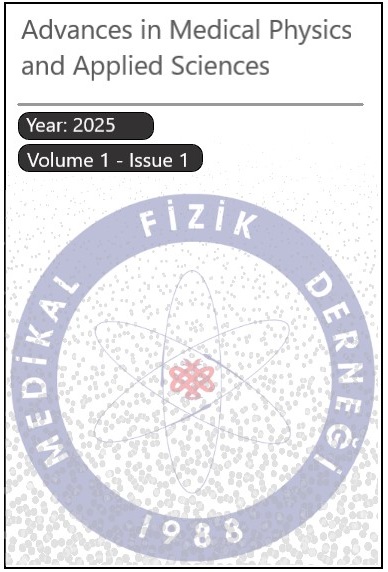Dosimetric Evaluation of VMAT, sIMRT, and dIMRT Radiotherapy Techniques in The Patients with Nasopharyngeal Cancer
DOI:
https://doi.org/10.63187/ampas.7Keywords:
Nasopharyngeal cancers, radiotheraphy, VMAT, step-and-shoot, sliding windowAbstract
Purpose: The objective of this study was to evaluate the comparative efficacy of VMAT and IMRTs in the treatment of nasopharyngeal cancers (NPC) with respect to dosimetry, and to ascertain the advantages of these techniques. Methods and Materials: A total of twenty NPC patients were subjected to analysis of their respective treatment plans, which were prepared using VMAT and IMRTs. A variety of treatment plans were devised, comprising 35 fractions with a total dose of 70Gy (PTV70Gy) and 56Gy to the elective lymph nodes (PTV56Gy). In the creation of NPC treatment plans utilising VMAT, IMRTs radiotherapy techniques, the objective was to deliver a 100% of the prescribe dose covers 95% of the target volume while ensuring the protection of critical organs at the minimum dose. Furthermore, the doses received by the target tissue and critical organs were compared with those delivered to the other techniques in terms of dose delivery time, MU, HI and CI. Findings: A comparison of the various techniques revealed that the D95 dose coverage for the PTVs was superior in the VMAT. In addition, the lowest dose sIMRT was observed for PTVs (p <0.05). The number of MU differed for different techniques, with the highest MU value calculated in the sIMRT and the lowest in the VMAT technique (p <0.05). No significant differences were found in HI and CI values among the three NPC radiotherapy plans (p> 0.05). Conclusion: It was determined that the optimal approach for NPC radiotherapy is to consider all relevant clinical and dosimetric factors, including patient-specific decision-making, dose distributions within the PTVs and OARs, beam-on time, MU, HI and CI indexs.
Downloads
Published
How to Cite
Issue
Section
License
Copyright (c) 2025 Barış Kaplan, Hatice Kübra Kölemen Tekten, Hatice Sevinç

This work is licensed under a Creative Commons Attribution 4.0 International License.




